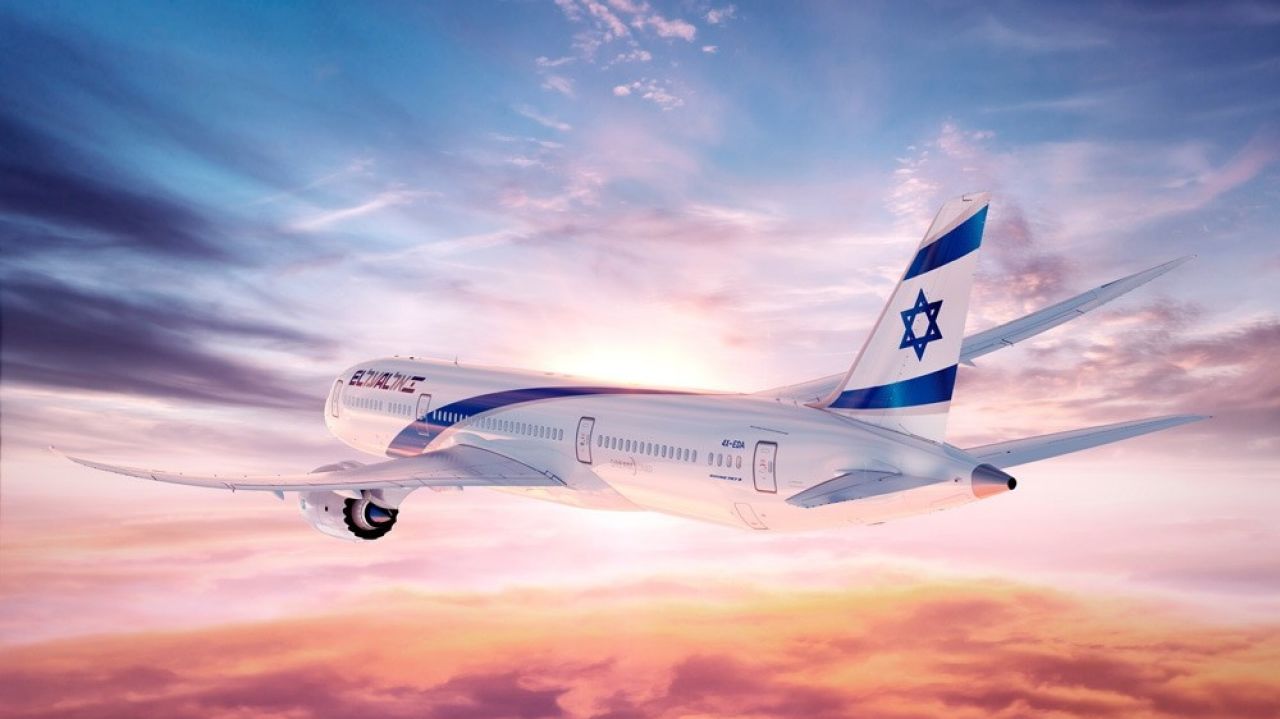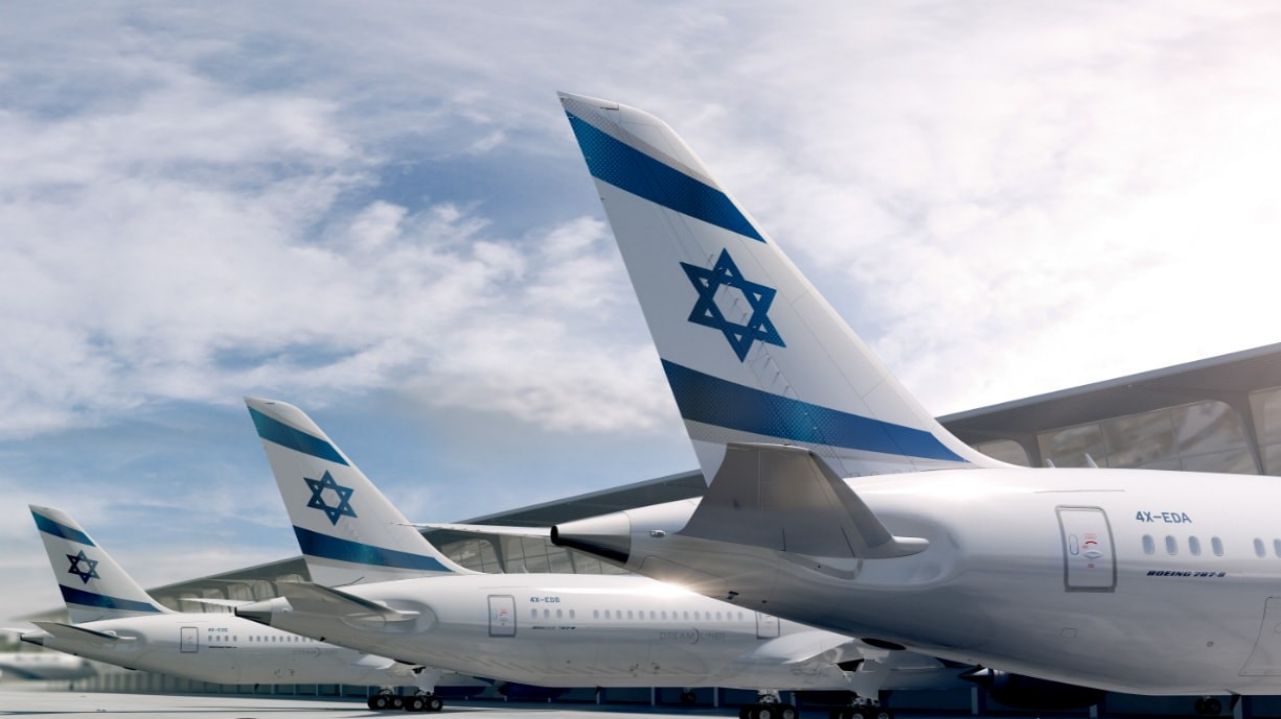Weather intelligence for the future: Crafting a strategic enterprise approach to changing environmental conditions
Continue readingChallenge
Efficient flight planning
To transport passengers to their destination on time, international airlines must meticulously plan each flight that they operate. If a plane deviates from its intended route, or is delayed or canceled, airlines can incur huge costs—making efficient, adaptive flight planning key to operational efficiency as well as passenger safety and convenience.
Recognized by the International Air Transport Association (IATA) as one of the most efficient airlines in the world, Israel’s national airline EL AL is committed to making sure each flight departs on time and arrives at its destination safely.
Alon Lavi, Chief Dispatcher in the Operation Control Center (OCC) at EL AL, explains: “We have a relatively small fleet of 46 aircraft, but we operate a range of short to long-haul flights across North America, Europe, Asia, Africa and the Middle East that few airlines of our size can match. To make this work, we need to be extremely efficient, so it’s critical for each of our flights to depart and arrive on time.”
No matter how detailed a flight plan may be prior to take off, once an aircraft is airborne, adverse weather conditions, ATC restrictions, or threats to airport security can suddenly arise—requiring pilots and flight dispatchers to work together to react quickly and make the right decisions about flightpath alterations and alternate airports.
Michael Werner, OCC Duty Manager at EL AL, says: “Our flight dispatchers used to rely on text-based weather reports, which made it difficult to build a clear picture of emerging weather systems and how best to avoid them. Tracking the current position and status of each of our flights in relation to weather events was equally cumbersome and near-impossible in real time.”
In the coming months, all airlines must be prepared to comply with new global flight tracking regulations, which require them to capture data on the position and status of each flight every fifteen minutes in certain areas. If an airline fails to track one of its aircraft, the regulatory penalties could be significant.
Alon Lavi says: “The new requirements for flight tracking are not just a matter of regulatory compliance—they are an opportunity for EL AL to gain even greater control of flight operations and efficiency.”

Solution
Gaining a clearer view
To meet the new flight tracking requirements, EL AL decided to extend its use of Fusion (PDF), a solution from The Weather Company that gives flight dispatchers and managers at EL AL’s Operation Control Centers insight into the current position and flight paths of all aircraft in near real-time, overlaid with live global weather data.
“We have used weather tracking solutions from The Weather Company for some time, and we knew we could trust in the reliability of the software,” explains Alon Lavi. “Fusion integrates weather data, aircraft positional data and airport information, as well as other types of key operational data, in one easy-to-read map—enabling our flight dispatchers to gain greater situational awareness.”
Tal Dillon, Flight Dispatcher at EL AL, agrees: “If I think back to before we used Fusion, it almost feels like we were blind. The solution makes our dispatchers’ lives so much easier. Everything is there on one screen, so we don’t have to switch between systems to get the information we need.”
Currently, EL AL uses Fusion to support its dispatchers in creating and managing flight plans for each of its flights from takeoff to landing. The airline has also integrated the automatic positional reporting features of its new Boeing 787 fleet directly into Fusion, and is currently working on integrating its Boeing 777s too. This will help to meet the major technical requirements of the flight tracking regulation.
Yamit Hahn, Development and Project Manager in the OCC, comments: “Deploying a flight tracking solution involves a significant amount of procedural change as well as complex technical configuration. Throughout the implementation we have received excellent support from The Weather Company team in the US, who can typically resolve our issues within one working day.”

Results
Keeping flights running smoothly
With Fusion at the core of its Operational Control Center, EL AL’s flight dispatchers can produce highly detailed flight plans and adapt to changes in the air or on the ground in near real-time.
Michael Werner comments: “Because all the data they need is easily and conveniently displayed on the Fusion map, our flight dispatchers can respond to changing weather conditions and adapt flight plans with much greater agility. For instance, when planning one of our flights from Tel Aviv to Rome, we noticed that the airport in Rome was due to be hit by stormy weather, which meant that the airport would have been unable to refuel the aircraft. As a result, our plane could have been grounded in Rome and unable to complete its return journey to Tel Aviv.
“To mitigate the risk of having to cancel the return flight, we loaded extra fuel into the aircraft at Tel Aviv, so that it would be able to make the return journey from Rome, even if thunderstorms prevented refueling. As a result, we were able to avoid the huge costs of a cancellation.”
Not only does Fusion empower flight dispatchers to make smarter decisions and more flexible flight plans, it also helps EL AL to achieve fuel efficiency savings.
Yamit Hahn comments: “With Fusion providing better awareness of the risks and the impact of weather conditions in actual flight, we gained the confidence to reduce reserves and optimize our fuel usage in flight planning. Our aircraft can now carry less fuel and fly lighter, which saves costs and is better for the environment.”
Once EL AL has integrated Fusion with the automatic positional reporting tools on its remaining Boeing 777 aircraft, the airline will have an even more robust and cost-effective way to track the position of each plane, facilitating regulatory compliance and boosting passenger safety.
Alon Lavi concludes: “Fusion is more than an industry-leading weather monitoring solution, it’s the complete flight tracking solution that we rely upon to help us run our operations efficiently, avoid hazardous weather and keep our passengers safe.”
About EL AL
EL AL was born in 1948 along with the State of Israel, not only as an airborne bridge between the fledgling state and the world, but as an expression of national existence and pride, as the Israeli flag adorning the aircraft’s tail appeared in destinations around the world. Today, EL AL flies passengers across the globe and is ranked by the IATA as one of the most efficient airlines in the world.
Discover Fusion
The ultimate aviation management and operations tool for global flight tracking, weather content, and business effectiveness.
Explore solutionLet’s talk
To learn more about the The Weather Company solutions featured in this story, contact our experts today.
Contact us
